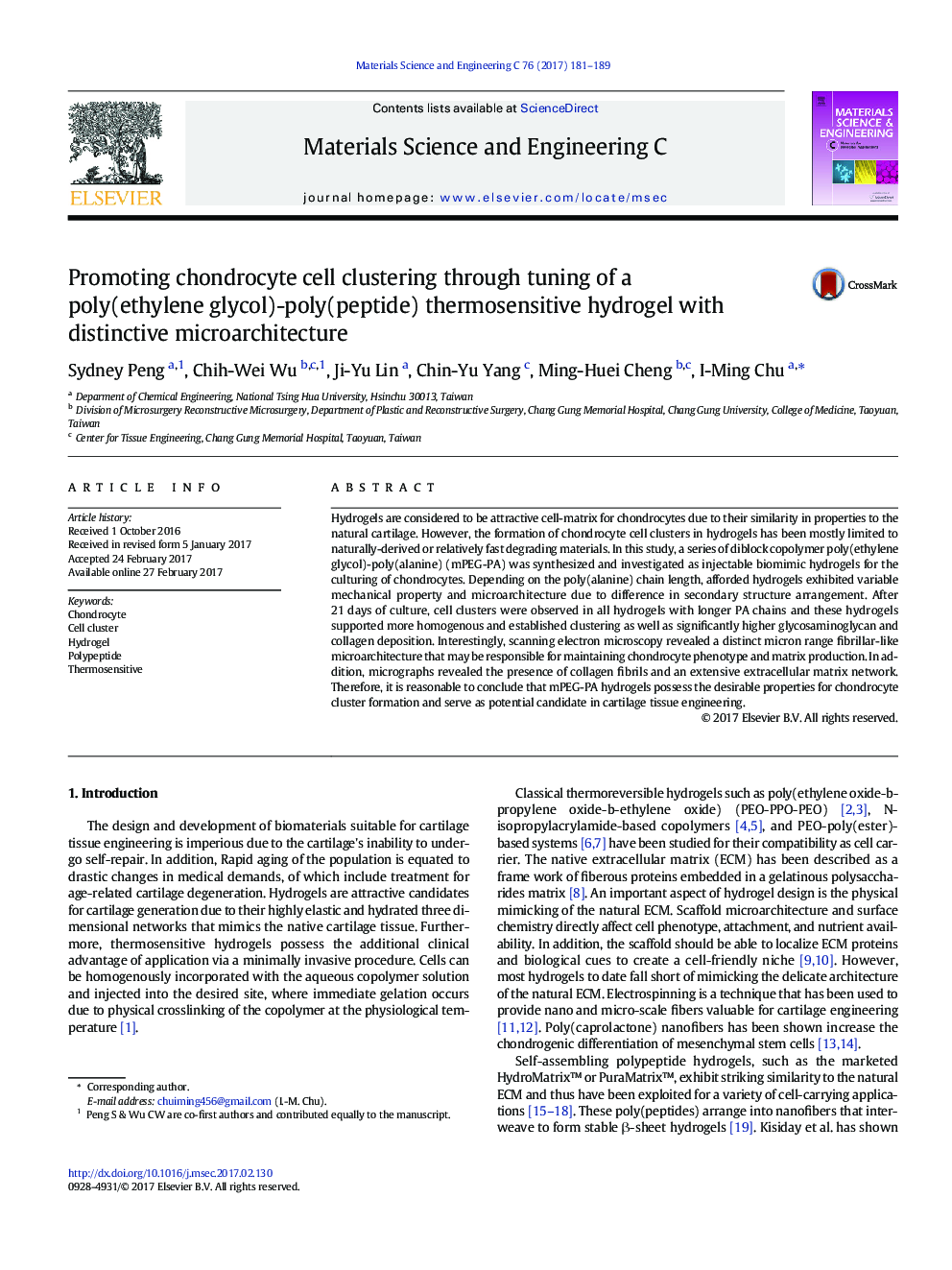| کد مقاله | کد نشریه | سال انتشار | مقاله انگلیسی | نسخه تمام متن |
|---|---|---|---|---|
| 5435107 | 1509145 | 2017 | 9 صفحه PDF | دانلود رایگان |
- Observation of distinct fibrillary-like microstructure in a thermosensitive poly(ethylene glycol)-poly(peptide) hydrogel.
- Growth of chondrocyte cell clusters observed with extended culturing up to 42Â days.
- Biochemical analysis revealed positive secretion of glycosaminoglycan and collagen in a period of 42Â days.
- Accumulation of collagen fibrils and an extensive extracellular matrix network within the hydrogel, as determined by SEM.
Hydrogels are considered to be attractive cell-matrix for chondrocytes due to their similarity in properties to the natural cartilage. However, the formation of chondrocyte cell clusters in hydrogels has been mostly limited to naturally-derived or relatively fast degrading materials. In this study, a series of diblock copolymer poly(ethylene glycol)-poly(alanine) (mPEG-PA) was synthesized and investigated as injectable biomimic hydrogels for the culturing of chondrocytes. Depending on the poly(alanine) chain length, afforded hydrogels exhibited variable mechanical property and microarchitecture due to difference in secondary structure arrangement. After 21Â days of culture, cell clusters were observed in all hydrogels with longer PA chains and these hydrogels supported more homogenous and established clustering as well as significantly higher glycosaminoglycan and collagen deposition. Interestingly, scanning electron microscopy revealed a distinct micron range fibrillar-like microarchitecture that may be responsible for maintaining chondrocyte phenotype and matrix production. In addition, micrographs revealed the presence of collagen fibrils and an extensive extracellular matrix network. Therefore, it is reasonable to conclude that mPEG-PA hydrogels possess the desirable properties for chondrocyte cluster formation and serve as potential candidate in cartilage tissue engineering.
Journal: Materials Science and Engineering: C - Volume 76, 1 July 2017, Pages 181-189
